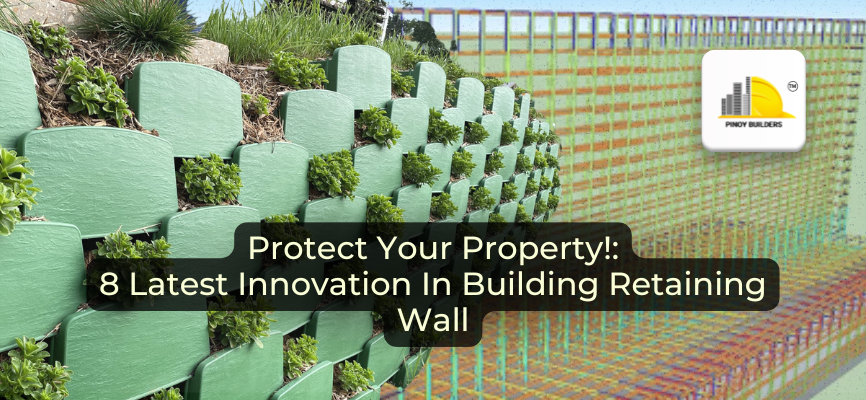Retaining walls are often overlooked, but they offer significant benefits for the safety and preservation of your home’s structure. Retaining walls not only hold back the earth but also shape our outdoor spaces into beautiful, usable, and walkable areas. These structures are far more than mere barriers; they are engineering solutions that continually improve over time.
As technology advances, so too do the methods for building these essential elements. Innovations are transforming how we design, construct, and maintain retaining walls, from the job site to our own backyard. Whether you’re a seasoned construction professional or a DIY enthusiast tackling your first landscaping project, understanding the latest innovations in retaining wall design will help you complete landscape projects that are not only functional but also long-lasting.

In this article, we will explore the eight cutting-edge techniques that are reshaping the retaining wall industry. Get ready to discover how these modern solutions can enhance both the function and aesthetics of your projects!
8 Latest Innovations in Retaining Wall Construction
1. Prefabrication and Modularization

Image from Milbank Concrete
Prefabrication involves the off-site manufacturing of retaining wall panels and interlocking blocks. This innovation is a solution that minimizes on-site construction time and waste while allowing construction professionals to develop complex designs, such as curved walls. The modular approach ensures consistency and quality control that simply eases the manufacturing process of retaining walls.
2. Eco-Friendly Retaining Walls
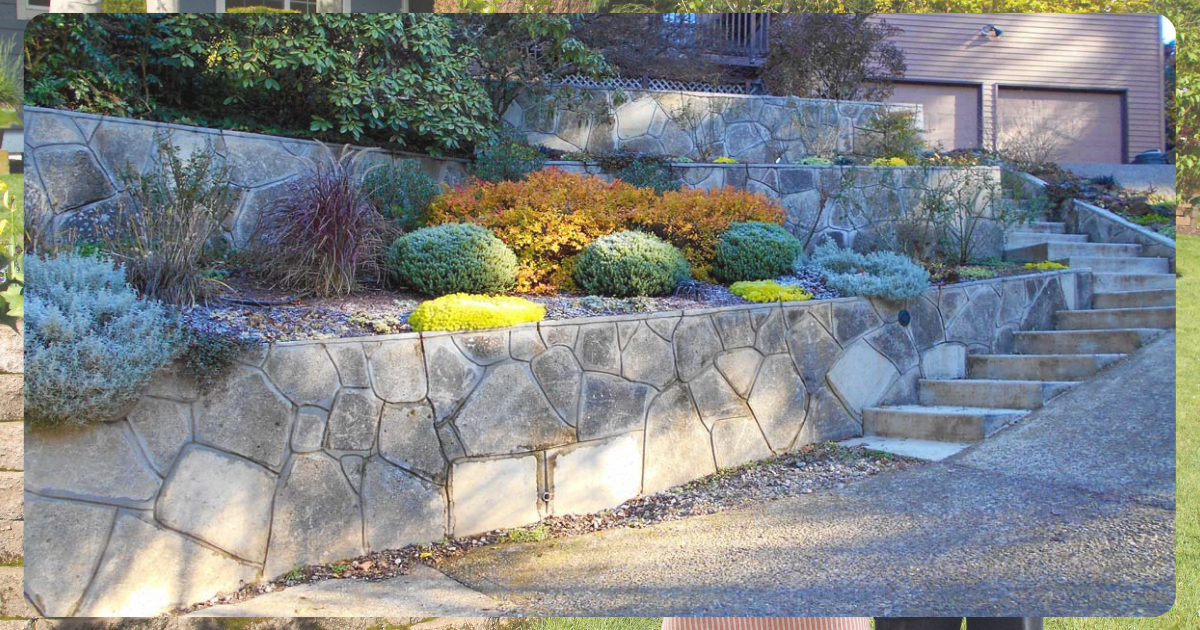
Image from The Wall
Many modern retaining walls are built using natural stones and organic materials like bamboo and hempcrete. These materials not only reduce the carbon footprint but also promote sustainability by putting eco-friendly materials in the spotlight. Incorporating natural elements helps construction projects meet environmental standards and appeal to eco-conscious clients.
3. Water-repellent coatings
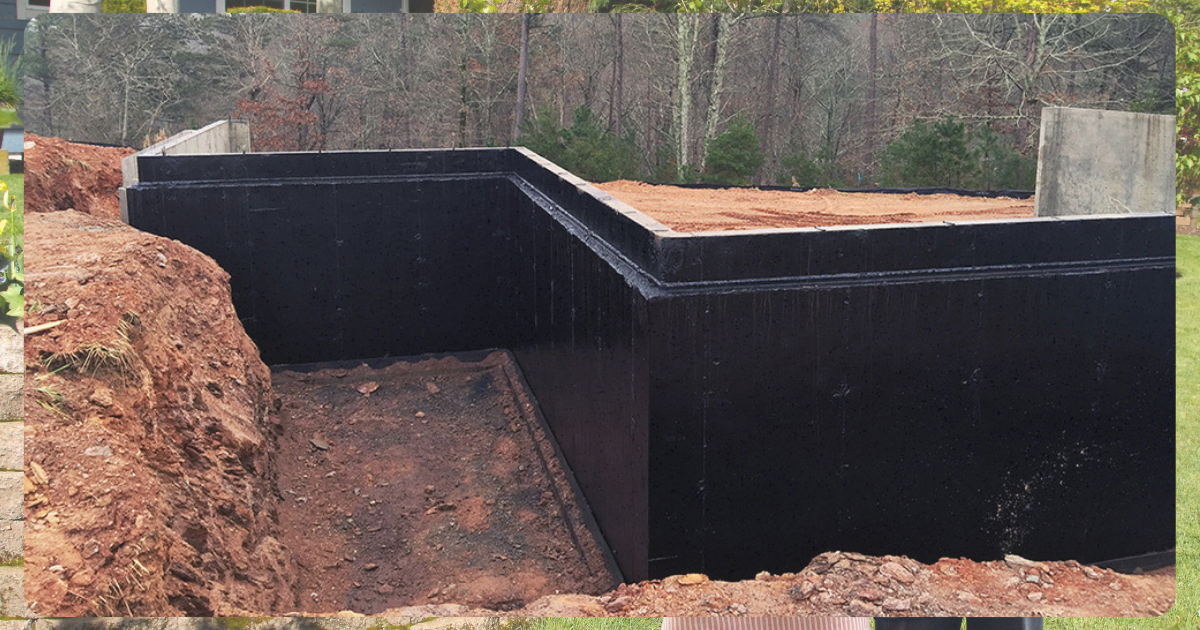
Image from Nimaco Chemicals
Advances in coating technology have led to the development of water-repellent treatments for retaining walls. These coatings protect walls from moisture and weather damage, therefore extending their lifespan and reducing maintenance times. By preventing water infiltration, waterproof coatings also help maintain the retaining wall’s structural integrity, ensuring the security of those who reside or occupy the space surrounding the retaining walls.
4. 3D Modelling in Design
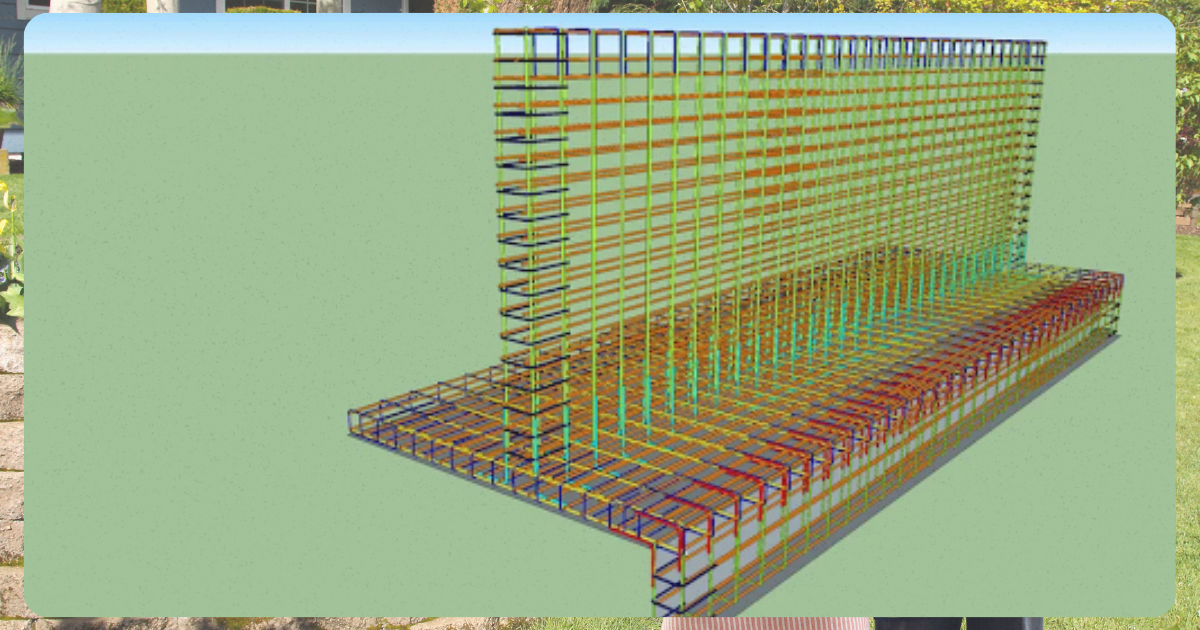
Image from 3D Warehouse – SketchUp
The integration of 3D modeling software is not limited to designing homes or buildings; it can also be used for the precise visualization and planning of retaining wall placements. This technology enables more accurate design execution, minimizes errors, and ensures that the final structure meets design specifications. One indispensable benefit of this innovation is its ability to facilitate better communication between clients and the construction team through visualization, even before any actual steps are taken, reducing wasted resources.
5. Biophilic Design

Image from Vertical Gardens
Biophilic design incorporates nature-inspired elements into retaining wall design. This approach uses natural materials, patterns, and colors to create visually appealing and harmonious structures that blend with the surrounding environment. Biophilic design enhances the overall appeal and connection of your retaining wall into the nature that surrounds it.
6. Self-Healing Concrete
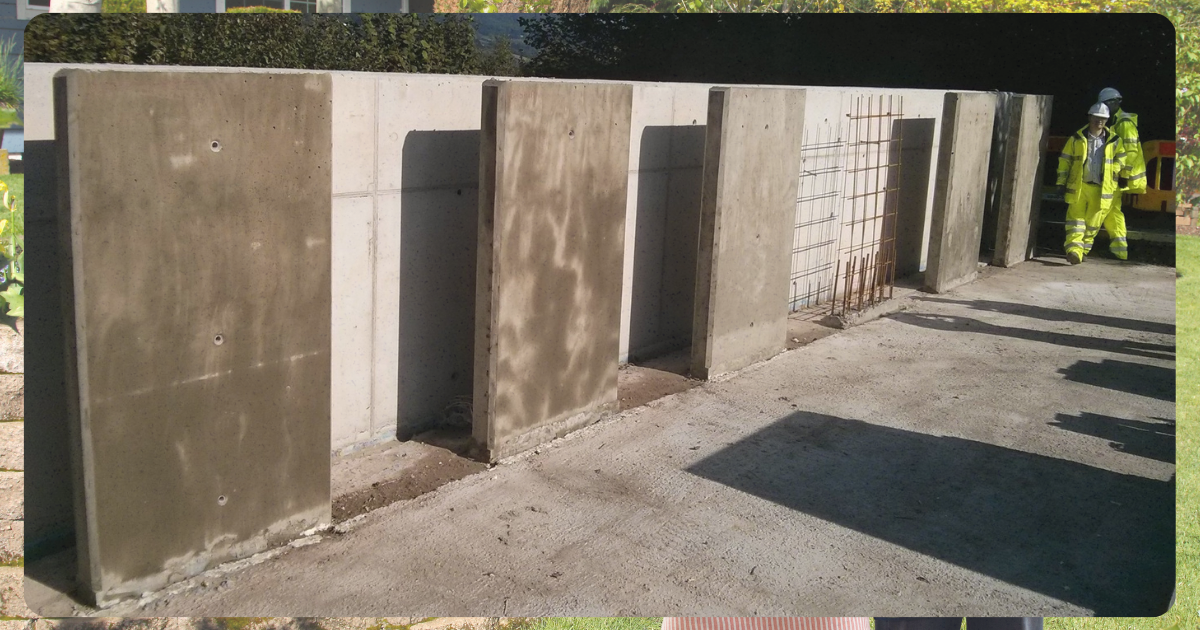
Image from LinkedIn
Self-healing concrete technology has also made its way into retaining wall development. Initially gaining attention in the construction industry for its innovative, game-changing capabilities, self-healing concrete is now being considered for use in modern retaining walls. This technology incorporates embedded bacteria or polymers that automatically repair cracks and damages, enhancing the durability of retaining walls by addressing minor issues before they escalate into significant problems, potentially reducing repair costs over time.
7. Fiber-reinforced Polymers and Geosynthetics
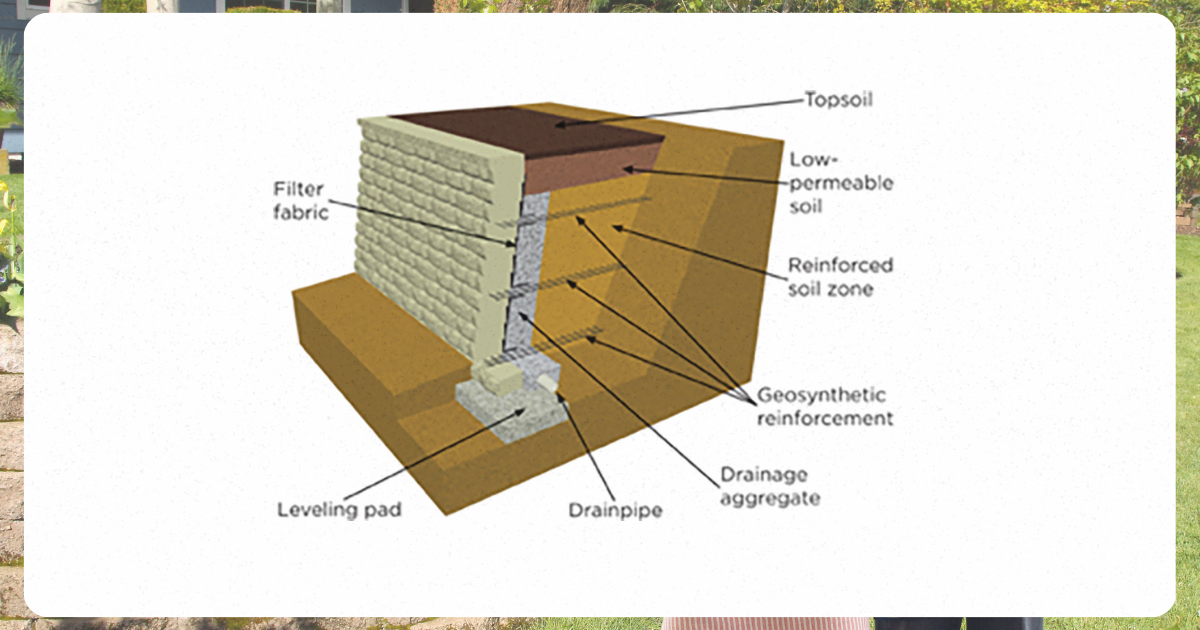
Image from ANCHOR Diamond
Fiber-reinforced polymers and geosynthetics are used to reinforce retaining wall systems, providing additional strength and stability. These materials help distribute loads more evenly and improve the overall performance of retaining walls, especially in challenging soil conditions.
8. Recycled Materials or Locally Sourced Aggregates
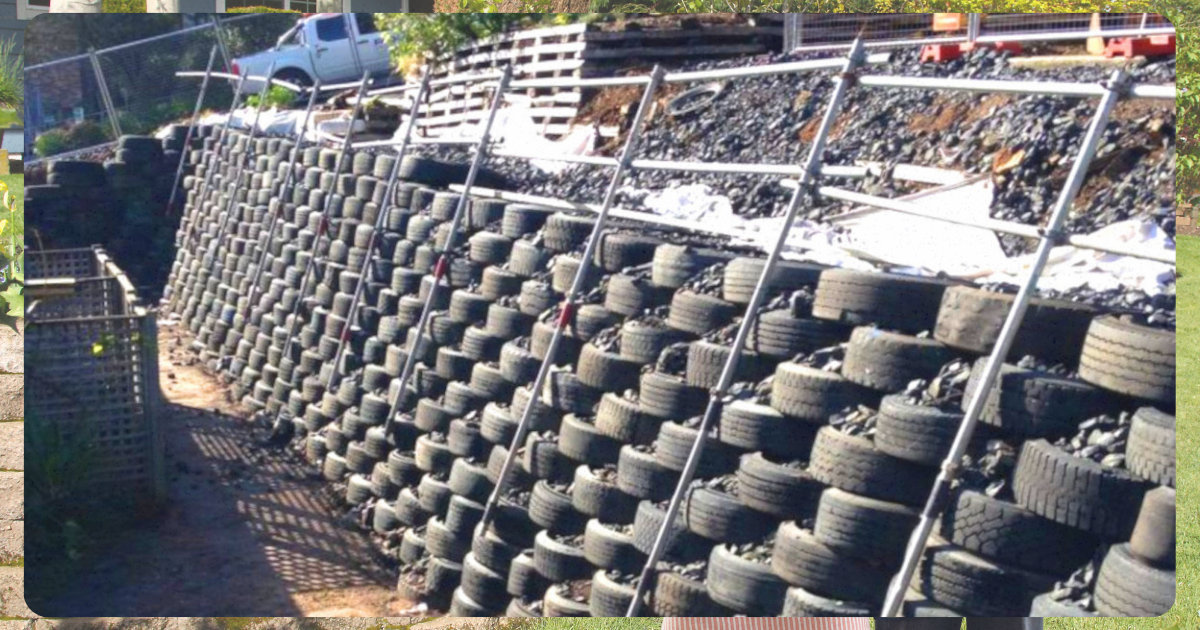
Image from The Fifth Estate
The use of recycled materials and locally sourced aggregates in retaining wall construction supports environmental sustainability. These practices reduce reliance on unsustainable and impractically sourced materials, lower transportation costs, and promote local economies, all while aligning with modern green building practices.
Maintenance and Safety Tips
Understanding maintenance and safety tips for retaining walls ensures their durability and effectiveness in soil retention. Proper design and upkeep prevent structural failures, erosion, and potential hazards, safeguarding both the structure and surrounding areas. This knowledge helps in creating long-lasting retaining walls.
Inspection
Regular inspections are crucial for ensuring the longevity and functionality of retaining walls. Look for visible signs of damage, such as cracks, bulging, or leaning (where the retaining wall is not aligned with the retained soil, and detachment may be present). Inspect both the wall structure and the surrounding area, paying close attention to potential erosion or settling issues.
Crack Repair
Small cracks should never be ignored. Once noticed, even the tiniest cracks should be promptly addressed to prevent them from worsening. For minor cracks, you can use a concrete patch or sealant to fill them. Larger cracks might require more extensive repair, possibly including structural reinforcement or professional evaluation. If self-healing concrete is used, it can automatically address small damages. However, note that this material is not yet widely used for retaining walls, and ‘self-repair’ does not happen instantly.
Erosion Control
Erosion is natural, and it can’t really be totally prevented, but that is what retaining walls are for. To minimize the erosion behind your retaining wall, make sure to monitor the area behind and around the structure for signs. Install or maintain proper drainage systems to direct water away from the wall. It is also important to check and clean drainage pipes and gravel to ensure they are functioning correctly and prevent water buildup, which can lead to wall failure.
Protect Your Property with Durable Retaining Walls
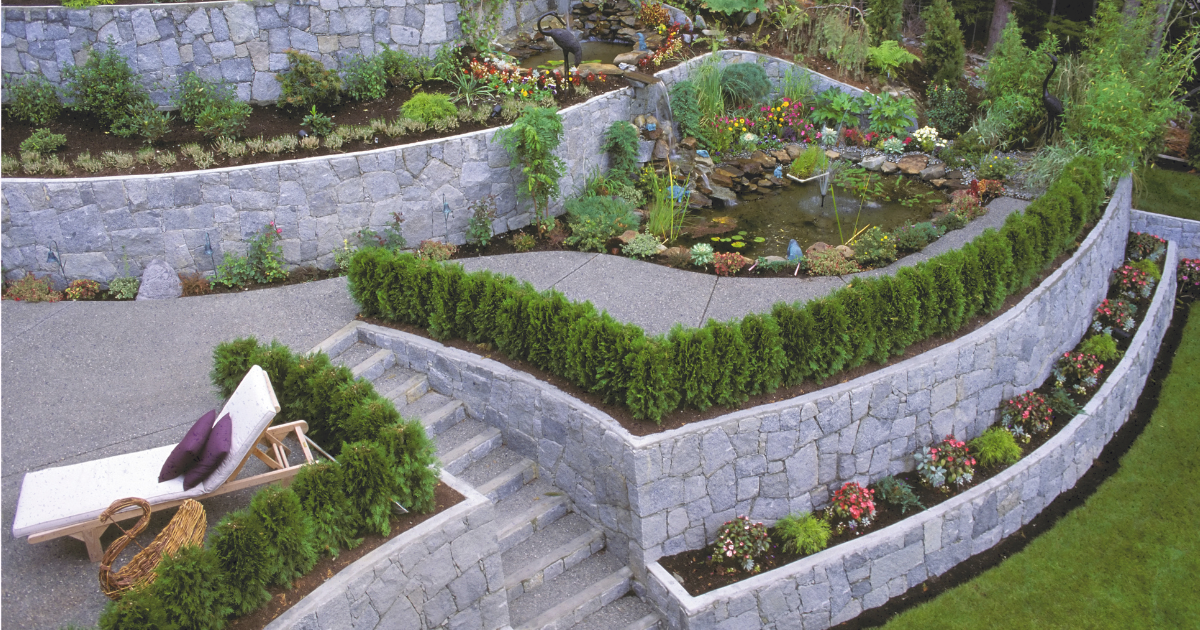
Embracing the latest innovations in retaining wall construction not only enhances the effectiveness and longevity of your projects but also aligns with sustainable and efficient practices. By incorporating these advancements, construction professionals and DIY enthusiasts can significantly improve property protection and landscape management. Apply these innovations to elevate your construction practices and achieve outstanding results.
References
Ajayi Design Construction. (n.d.). Top Trends in Retaining Wall Design and Materials for 2024. Ajayi Design Construction. https://www.ajayidesignandconstruction.com/post/top-trends-in-retaining-wall-design-and-materials-for-2024
Retaining Wall Supplies. (2023, June 22). Future Trends in Retaining Wall Construction and Design: What to Expect in 2023 and Beyond. Retaining Wall Supplies. Retrieved August 16, 2024, from https://retainingwallsupplies.com.au/future-trends-in-retaining-wall-construction-and-design-what-to-expect-in-2023-and-beyond/
Slaton Bros. (n.d.). Innovative Design Ideas for Retaining Walls: Beyond Functionality. Slaton Bros. Retrieved August 16, 2024, from https://slatonbros.com/innovative-design-ideas-for-retaining-walls-beyond-functionality/


